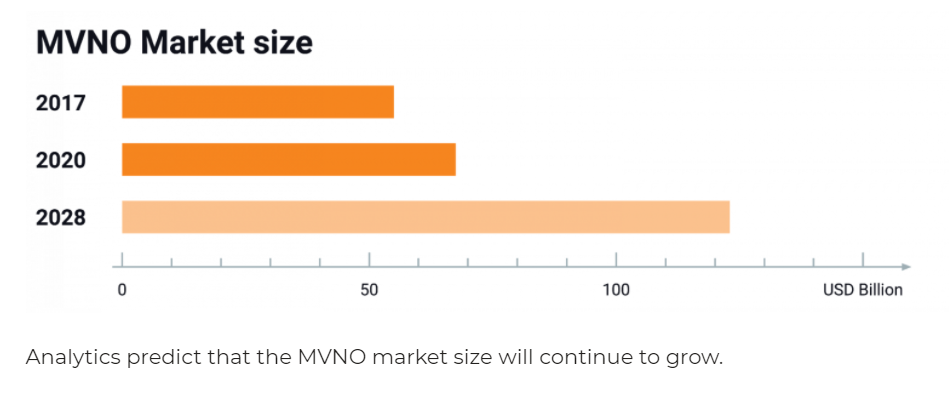We discuss the following topics in this blog:
- MVNOs fueled by IoT, AI, ML, and edge computing.
- Partnerships and Private Campus Networks.
In addition to these topics, we shall also be answering the following FAQs:
- What is WiFi?
- What is an Optical Fibre Cable?

Contents
How MVNOs can Leverage AI and 5G to Make a Difference?
The potential of 5G and emerging technologies like artificial intelligence (AI) and machine learning (ML), is fuelling growth opportunities for mobile virtual network operators (MVNO). So what does MVNO stand for and how can they bring around a difference in the telecom business landscape?
Typically, Mobile Virtual Network Operators (MVNO’s) are wireless services providers who do not have their wireless network infrastructure; instead, they buy network capacity from the existing mobile network operators (MNO) to deliver services to their end-users. Most MVNOs have already had a strong WiFi presence, enabling lower costs and offering the best service quality to end-users. Most cable operators are becoming MVNOs offering a cheaper entry model than building their own network. Keeping in line with the trends, many opportunities emerge for MVNOs to latch on. A few of the options are being discussed that will enable MNVOs to make a splash.
MVNO Market is Huge
At present, the MVNO market estimates stand at USD 61.9 billion and are expected to swell to USD 91.63 billion by 2026, states a report by Mordor Intelligence. Emerging business opportunities in the form of e-SIM, 5G, Internet of Things (IoT), AI, ML, and edge computing are expected to fuel the growth of MVNOs in the coming days.
As for now, the telecom market is seeming to head towards a data-centric market, and higher activity will be seen happening over the cloud as more computing-related work and apps will be accessed over the cloud. Work from home is the new normal, and with most companies making it mandatory is witnessing high growth in internet traffic, making it a good case for MVNOs to latch on to this opportunity.

Business Opportunities are plenty for MVNOs and broadly MVNOs can look at forging partnerships with large or big operators or look at facilitating to set up private campus networks, building solutions with AI & ML, and helping customers with E-SIM facilities are good business pointers for MVNOs to begin with. Briefly discussed are a few of them, and MVNOs can convert these indicated points as key business takeaways.
Can Partnerships Bring Greater Value for MVNOs?
Partnering with large operators will see and bring greater value proposition for MVNOs, take, for instance, MNVOs partnering with a large operator such as Orange or other leading operators like STL, will see the greater value proposition in terms of innovations, network quality, cloud, and significant data capabilities, with latest technologies 5G offers like network slicing – all these can be secured partnering with such a large operator.
Private Campus Networks
There is a positive trend in having more organizations seeking to set up their private campus networks; this is where MVNOs can broadly seek support to enable setting up such private campus networks and maintaining them.
E-SIM, NFV, & SDN
e-SIM stands for Electronic subscriber identity modules (e-SIMs), and will offer the best connectivity without requiring users to install it and provide ease of use. Network Function Virtualization (NFV) and Software Defined Networks (SDN) enable faster time-to-market (TTM) for new services and provide other benefits, such as the management costs of wholesale data by reducing video traffic on the host network.
AI and ML
Tremendous traction in AI and machine learning with data analytics will improve customer personalization for IoT is something MVNOs will look to offer. MVNOs are well-positioned to offer distributed computing power of their own or use the mobile network operator’s edge computing and can offer services with less latency to end-users.
End Note
MVNOs will play a key role in shaping lives and improving societies by offering mobile services to all classes of people, smaller companies, and start-ups, helping them scale up. MVNOs will be more competent to jump into the digital age and make the plunge and all set to disrupt mobile tariffs and make a big difference. Industry-leading network aggregator STL can help MVNOs navigate and guide their business. Read more about STL’s very own game-changing MVNO solution and explore the endless expansion possibilities through long-lasting partnerships with technology leaders in the MVNO space,].
FAQs
What is WiFi?
Put simply, WiFi is a technology that uses radio waves to create a wireless network through which devices like mobile phones, computers, printers, etc., connect to the internet. A wireless router is needed to establish a WiFi hotspot that people in its vicinity may use to access internet services. You’re sure to have encountered such a WiFi hotspot in houses, offices, restaurants, etc.
To get a little more technical, WiFi works by enabling a Wireless Local Area Network or WLAN that allows devices connected to it to exchange signals with the internet via a router. The frequencies of these signals are either 2.4 GHz or 5 GHz bandwidths. These frequencies are much higher than those transmitted to or by radios, mobile phones, and televisions since WiFi signals need to carry significantly higher amounts of data. The networking standards are variants of 802.11, of which there are several (802.11a, 802.11b, 801.11g, etc.).
What is an Optical Fibre Cable?
An optical fibre cable is a cable type that has a few to hundreds of optical fibres bundled together within a protective plastic coating. They help carry digital data in the form of light pulses across large distances at faster speeds. For this, they need to be installed or deployed either underground or aerially. Standalone fibres cannot be buried or hanged so fibres are bunched together as cables for the transmission of data. This is done to protect the fibre from stress, moisture, temperature changes and other externalities.
There are three main components of a optical fibre cable, core (It carries the light and is made of pure silicon dioxide (SiO2) with dopants such as germania, phosphorous pentoxide, or alumina to raise the refractive index; Typical glass cores range from as small as 3.7um up to 200um), Cladding (Cladding surrounds the core and has a lower refractive index than the core, it is also made from the same material as the core; 1% refractive index difference is maintained between the core and cladding; Two commonly used diameters are 125µm and 140µm) and Coating (Protective layer that absorbs shocks, physical damage and moisture; The outside diameter of the coating is typically either 250µm or 500µm; Commonly used material for coatings are acrylate,Silicone, carbon, and polyimide).
An optical fibre cable is made up of the following components: Optical fibres – ranging from one to many. Buffer tubes (with different settings), for protection and cushioning of the fibre. Water protection in the tubes – wet or dry. A central strength member (CSM) is the backbone of all cables. Armoured tapes for stranding to bunch the buffer tubes and strength members together. Sheathing or final covering to provide further protection.
The five main reasons that make this technology innovation disruptive are fast communication speed, infinite bandwidth & capacity, low interference, high tensile strength and secure communication. The major usescases of optical fibre cables include intenet connectivity, computer networking, surgery & dentistry, automotive industry, telephony, lighting & decorations, mechanical inspections, cable television, military applications and space.















